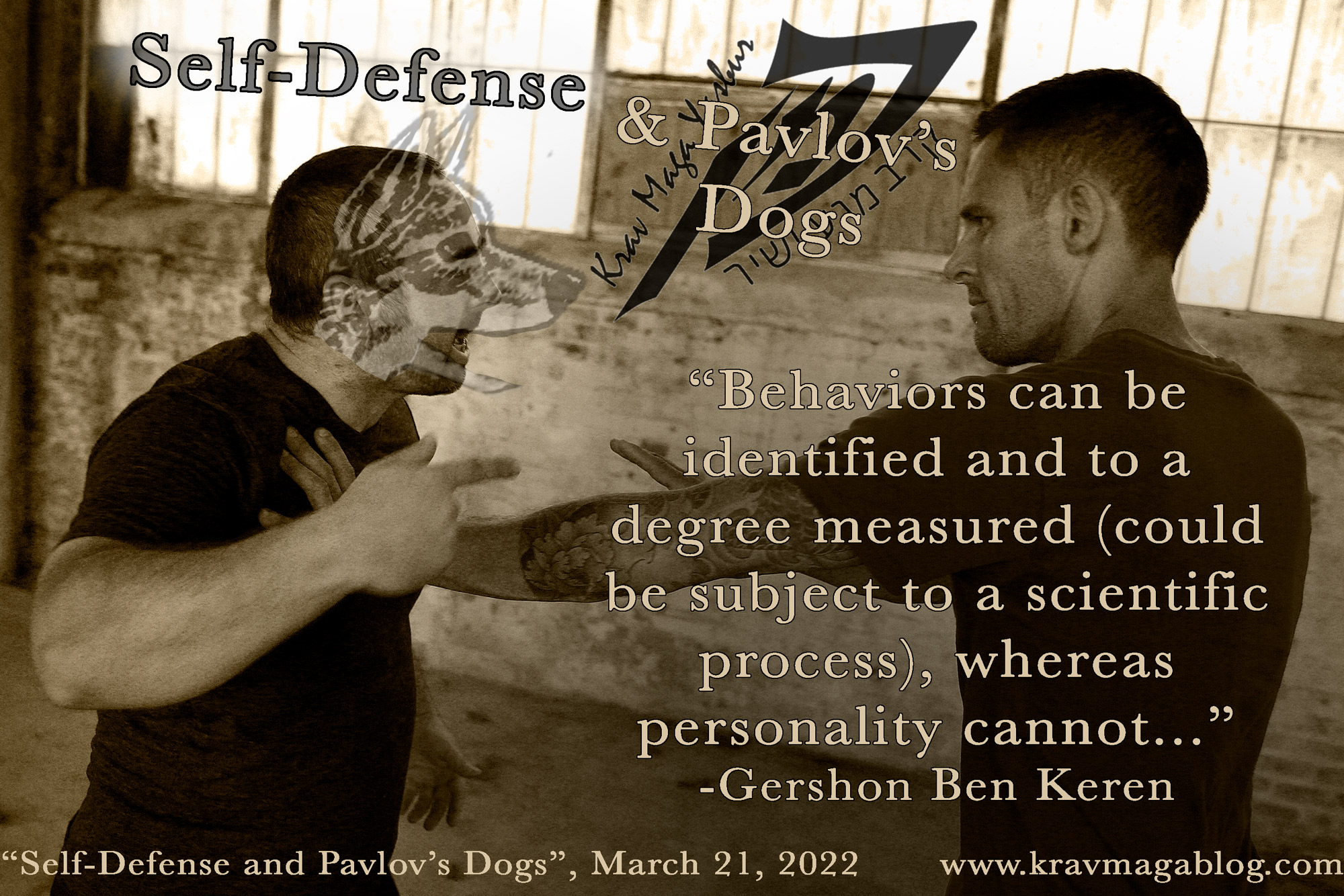Self-Defense & Pavlov’s Dogs, is an article written by Gershon Ben Keren, a 5th Degree Black Belt in Krav Maga, who teaches Krav Maga in Boston, MA. He has also authored three Amazon best-Selling Books on Krav Maga.
When I first became academically interested in psychology, over thirty years ago, I was interested in learning what made people tick i.e., why do certain people have certain personalities, character traits, etc. – so I was initially disappointed when in my first class, I was informed that psychology was the study of behavior, not personality. It soon became obvious why this was: behaviors can be identified and to a degree measured (could be subject to a scientific process), whereas personality cannot e.g., a person may be reserved in almost all of their day-to-day dealings, leading us to believe that they have a non-expressive and unemotional personality, and then on match days when their sports team is playing, be the most excited, emotional, and expressive person in the room. It is the observable/measurable behaviors that allow us by deduction to understand and “define” personality. This is the method used in diagnosing personality disorders, such as narcissism, and/or anti-social personality disorder where the person being diagnosed has to have engaged in a certain set of behaviors in a consistent manner over a certain period of time. In this article, I want to look at a physiological experiment concerning behavior that has important ramifications for understanding aggression/violence and certain aspects of Krav Maga. The experiment is one that is commonly known: Pavlov’s Dogs.
For those who don’t know the full details of the experiment, it was a very simple one. The experiment involves a dog in a harness standing on the table in an empty room. Pavlov stands behind a one-way screen, watching and recording the dog’s responses when it is presented with different stimuli (one of these is a bell). A glass is on the table catching the saliva from the dog as it salivates in response to the various things it experiences. The dog hears the bell ring (known as the conditioned stimulus – CS) but it provokes no response i.e., no salivation, but when it is shown some meat, it starts to drool – an unconditioned stimulus - UCS). The experiment concerns connecting the conditioned stimulus, with the unconditioned stimulus, to see if the conditioned stimulus can produce the same response as the unconditioned stimulus. To do this the bell is rung (CS) just before the dog is shown and then given the meat (UCS). Eventually the dog begins to salivate when it hears the bell being rung, as it anticipates being shown/given the meat i.e., the dog has been conditioned to salivate. Most people are aware of this part of the experiment, but it goes further. The bell is now changed so that it has a different tone and sound i.e., how specific does the conditioning need to be to elicit a response. Even with a different sounding bell the dog continues to salivate, however the degree to which it does changes somewhat in relation to how the bell sounds. The closer the sound is to the original bell the more it salivates, the more different the sound is, the less it does. This is known as the law of generalization and helps explain why someone who is an aggressive driver, who reacts violently when frustrated (stimulus) in one setting, is likely to react violently in others when they feel frustrated. It is through recognizing a common behavior/response in situations that resemble each other, that we can determine that said individual has an aggressive/violent personality and may be – along with other factors – diagnosed as having an anti-social personality disorder.
In Krav Maga, one of the principles is that attack should follow defense at the earliest opportunity i.e., you don’t survive a violent altercation without at some point attacking your assailant – even if it is just to stun and run – and the sooner this is done, the better. This idea is often represented in the idea of simultaneous attack and defense e.g., when you make an Outer Defense/360-degree block, you make a simultaneous punch (perhaps one of the first techniques/solutions that most Krav Maga practitioners learn). Because the Outer/360 Defense is based off a startle/flinch response (an Unconditioned Stimulus), there is often a belief that this response can be altered to include the simultaneous punch e.g., when someone throws a swinging punch to your head, you will automatically block and simultaneously punch. However, this is not the case e.g., the dog’s response didn’t differ, it didn’t do something else other than salivate, such as defecate – the stimulus just changed. This is not to negate the role of simultaneous striking and blocking i.e., the sooner an attacker can be disrupted and forced to go on the defensive the better, but rather expecting to perform a simultaneous strike when startled is unlikely. I say unlikely rather than never, as it is possible to a degree to “assemble” a non-automatic response to an automatic, instinctive one but it is largely based on context and awareness and is certainly not a default behavior that comes after a few years of training that is specific i.e., there is not an automatic transfer of training. I have used/made simultaneous/near-simultaneous strikes and punches, however these have always occurred when forcing/guiding an attacker to make a certain strike e.g., by positioning and posturing “encouraging” them to make a swinging/circular attack rather than a straight one etc. I have flinched and “blocked” punches when completely surprised yet despite my years of training have never found myself in such moments immediately going on the offensive.
Pavlov’s experiment(s) is extremely important in demonstrating how specific a stimulus has to be in order to generate a certain response – as long as the sound was bell-like, the dog would salivate. This idea of generalization helps explain why there are “angry” people in the world, who will respond violently whether it’s a perceived insult in a bar, or being cut off in traffic etc. However, it also demonstrates that there is a degree of specificity – the stimulus has to have a degree of “resemblance” to others. What the experiment also demonstrates is that it is difficult to “assemble” an unnatural action to a natural/inherent/instinctive response.
0 COMMENTS















